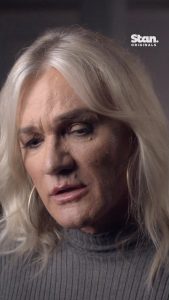Roger Federer has announced his retirement from professional tennis. The past injury years notwithstanding, for many years now fans have been going to Grand Slam tournaments or glued to their television sets to watch Roger Federer lose. That is going to be the defining legacy of the artistic Swiss who even in defeats gave the crowds moments of pure genius to cherish forever.
Accounting for the percentage of points in matches won by the Big Three, Federer is third and Rafael Nadal leads the pack (French Open dominance, perhaps). The leading three players with the highest percentage of points won when winning matches are below.
Percentage Of Points Won By Match Winners1. Rafael Nadal = 56.40%2. Novak Djokovic = 56.12%3. Roger Federer = 55.91%
This is where things get way more interesting. Accounting for the percentage of points won in matches lost, Nadal and Djokovic don’t figure even in the Top Ten and Federer leads the pack.
Percentage Of Points Won By Match Losers
1: Roger Federer =47.57%T2: Richard Krajicek =47.31%T2: Milos Raonic = 47.31%
This shows that the player who is essentially the “toughest out” in tennis is Federer. In a losing effort, he has consistently won more points than anyone on Tour. In simple language it means that more often than not you have to go the distance to win against Federer, probably deep in the fifth set. There are very few easy matches against the Swiss magician no matter the opponent or till 2019 his age. He made the seven years younger Djokovic admit that Wimbledon 2019 was mentally the toughest match of his career.
The way to pick the Greatest of All Time (GOAT) is to give a level playing field to the modern greats, not much can be done about those who have played the game before the Open Era apart from going by anecdotes.
So if you had to pick a player without knowing whether he would be playing on grass, hard courts or clay and not knowing if he would have the modern Wilson or the wooden racquet—you also would not know who would be the opponent—where would you put your money. It’s a no brainer. Federer was great on grass, superb on clay as Nadal would tell you and a force on hard courts. He can serve and volley, he has immense court sense and all the shots plus more, and he’s done pretty well for himself once the game turned to power from the baseline just as he was on the wrong side of 30.
After dominating the tour from 2004 to 2007, picking 11 Majors and dropping just 5 (Four French Opens and one Australian) out of a potential 16, Federer had a mortal 2008 where he won just one Slam—the US Open. Everybody on the tour during Federer’s dominance was living on scraps.
As the 2009 season progressed Federer found his feet and defeated Nadal in the clay court tournament played in Madrid as a run up to the French Open. He then won the French Open for the first time by beating Soderling, who had shocked the tennis world a few days earlier by eliminating Nadal.
Against Tommy Haas earlier in the tournament, Federer was down two sets and serving at 30-40, 3-4 in the third when he played a forehand for the ages that turned his year around. Federer ran to his left and cracked an inside out forehand that sailed over the net and flew without any hint of fear to land just inches short of doom. He won nine straight games after that. Haas couldn’t believe it or perhaps did as he said: “That’s why he’s Roger Federer.”
In 2009, Roger Federer reached the finals of all the four Grand Slam tournaments and faced a different opponent at each venue. The two finals he lost were both five setters in which a poor final set by Federer sealed the match he otherwise looked more in control of.
“The argument for Federer as the greatest player in men’s tennis history starts from the ground up, with feet snug in lightweight custom Nike sneakers, with muscles sculpted from training sessions in Dubai, with movement that makes Hall of Famers marvel,” wrote Greg Bishop in The New York Times.
Even ballet dancers are impressed by Federer’s footwork. Kathryn Bennetts runs the Royal Ballet of Flanders in Belgium. She grew up in Australia with tennis courts all around and when she became a professional dancer she saw a correlation of movement between both the passions.
“Elite dancers combine speed, dexterity, power and coordination. Grace stems from their awareness of their feet and the way movement flows from there. They move easily, in balance, made to appear that way through thousands of hours of repetition. In Federer, Bennetts found the Mikhail Baryshnikov of tennis.”
“He has this smoothness to him,” she said. “He’s an artist, so refined. Like how dance transports you to a different place, so does he,” Kathryn was quoted by Bishop in a story about Federer’s footwork.
Records would be eclipsed, Nadal or Djokovic would settle the GOAT debate and leave a model for young tennis players to follow. Nole, as they say, is the best assembled player in tennis. Another Roger Federer is highly improbable as much for his natural talent, beauty and toughness as for his nerves—a genius, they say, is someone with flaws harder to imitate than his qualities.







